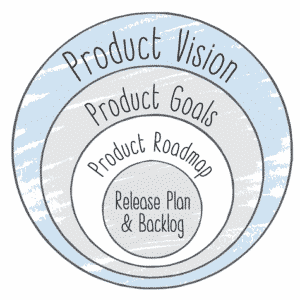If launching new products were easy, you’d probably be reading this post through your Google Glass or on an Amazon Fire Phone.
But there’s no universally effective launch plan to follow, and even the most seasoned product managers often struggle to get new products off the ground. Getting to the minimum viable product is a balancing act—on one hand, you want to thoroughly validate against potential failure points, but on the other hand, you want to get to market quickly.
For years I’ve helped define and launch products that, in the beginning, were simply concepts. My goal with this post is not to write a rigid formula that probably won’t work for your unique company—I’ve never been interested in turning an art into a science. Instead, I’ll provide some guiding principles to help you feel comfortable taking the plunge. Here are the five most valuable lessons I’ve learned from launching new products.
1. When it comes to launching products, start before you’re ready.
The nature of building a new product or starting a new company is that you don’t have very much information on which to base decisions. Established products have the luxury of history; their product managers can analyze years of usage data or survey statistically significant pools of existing customers to help make decisions. New products, on the other hand, are a clean slate.
But that doesn’t give those of us building new products license to skimp on market validation. You still need to do the necessary work to get to your MVP. That is, you still need to talk to prospects and understand as much as you can about their workflows and pain points. You need to ask them how much (and if) they are willing to pay to solve the problem your product intends to solve. And you need to solicit feedback on prototypes and make changes accordingly.
However, once you’re reasonably confident that your product provides value to your market, launch it.
Too many entrepreneurs and product managers wait until their product is absolutely “perfect” before putting it in front of customers. Of course, you understandably want to impress the market with a robust feature set and a polished UI, but waiting until you reach “perfection” is a mistake.
Getting your product in the hands of real users is precisely how you start building that knowledge base that established products benefit so much from. The more time you spend upfront building out features based on assumptions, the more time you take away from iterating on actual feedback and real-world user behavior.
For example:
When we were validating ProductPlan, we uncovered the pain product managers were experiencing around communicating their roadmap. But rather than solving all the pain with our first release, we launched a product that solved just enough significant pain that customers were willing to pay for it. We’ve continued to enhance the product since that day, incrementally solving more pain with each release.
Here are a few common mistakes people make when launching new products, and how they can be avoided by launching early:
Misaligning with your market.
It’s often the case that the people you initially build your product for don’t end up as your core customers. Sometimes adjacent markets or personas are actually a better match. For example, perhaps you thought you were building an enterprise software product, but it turns out to resonate better among the mid-sized businesses. The good news is these types of mistakes are usually correctable, given you’re willing to fail fast and adjust course.
Extrapolating from a small sample size.
Another common mistake happens when you interview a few people and assume their problems apply to the entire market. Small sample sizes distort data. What’s one way to open the spigot and allow more people to weigh in? Launch early!
Overinterpreting positive reactions.
Generally, people don’t want to hurt your feelings. If you ask them what they think of your beautiful new product that you’ve spent months working on, they’re likely going to tell you it’s great. When you’re just collecting feedback and there’s no real business transaction at stake, it’s easy for people to overestimate how often they’ll use your product or how much they’re willing to pay for it. Launching can help you avoid these false positives and get to the truth faster.
2. You don’t build products. You solve pain.
People don’t buy products because they have X, Y, and Z features; they buy products to help them solve problems. Think about the products you use every day and the reasons why you use them. You probably wouldn’t say you value LinkedIn for its newsfeed algorithm or direct messaging feature. Instead, you’d say that it helps you find job opportunities or hire talented people.
In general, the benefits of using a product matter much more to customers than specific features and capabilities. Your job as someone launching a new product is not to build the best features, but to solve the most important problems. The best part is, if you’re able to effectively solve someone’s problem—whether that means alleviating a pain point in their workflow or helping them get home to their family on time—they’re likely going to forgive you if the product falls short in other areas. They’ll stick with you as you work out the initial kinks because the core value you’re providing is worth it.
For example:
When I was part of the team validating the product that was to become GoToMeeting, we uncovered pain around the complexity and high variable cost of other online meeting solutions. We decided to launch a simpler product that was easier to budget. It wasn’t about more features. It was about simplifying the customer’s experience and reducing frustration.
A lot of startups fail because they run out of money. The way to circumvent that trap is to focus on nailing the problem first. Invest in understanding the context in which your potential customers will use your product. What’s the most frustrating part of their day? What motivates them? What does it mean for them to have a good week/month/year? (Check out this list of 10 questions product managers should ask customers for additional interview ideas). Find a strong pain point that people are willing to pay to solve and pivot to building ancillary features only after you’ve started collecting your first payments.
3. The whole experience is the product.
Another common mistake that product managers and entrepreneurs make is focusing solely on the application itself, instead of looking at the product holistically. A customer’s impression of your product is not confined to the time they spend in the app. The customer experience begins the moment they click on one of your ads or find their way to your marketing website, and it extends to the interactions they have with your support and sales teams.
It’s important to consider the customer journey as a whole, because if you’re always heads-down working on the application, you may miss out on some great wins in other areas. Every component of the customer journey represents an opportunity to innovate and stand out from your competitors. Differentiators don’t always have to be features; they can be a unique pricing model (as in the case of GoToMeeting), a speedy onboarding experience, or superior customer support.
When you’re launching a new product, take time to understand the entire ecosystem surrounding it. There are probably strings you can pull to make the customer journey smoother and simpler. For example, how can you make it easier for people to find and buy your product? And what about the way you talk about your product in demos and on the marketing website? Are you clearly communicating the value proposition?
4. You don’t know what you don’t know.
Oftentimes we avoid testing new ideas because we think we already have the answers. “That obviously won’t work,” we tell ourselves. Established companies are especially guilty of this. They have thousands of customers using a given product feature, so they think it must be a good feature. Or their current pricing model has brought in plenty of sales, so they’re convinced it’s the perfect pricing model. No need to test anything new, right?
Wrong. You don’t know what you don’t know, and your own assumptions can sometimes be your biggest barriers to success. An experimental approach can help you overcome blind spots and stay ahead the competition. New products and companies are uniquely positioned to approach problems with a beginner’s mindset. Be sure to capitalize on this advantage and experiment with lots of different approaches to figure out what works best.
Another problem with assumptions is that they often hold us back from doing any actual legwork. You may think that customers want feature X and not feature Y. Or you may believe that message A resonates more strongly with prospects than message B. But how sure are you really?
Don’t be an armchair product manager. Get out of your building and interview potential customers. Or better yet, go observe their current processes and work environments. The truth about what will make your product successful is out in the world, not in your imagination.
Tweet This:
“Don’t be an armchair product manager. Get out of your building and interview potential customers. Or better yet, go observe their current processes and work environments.”
5. Start with the end in mind.
Before you get too deep in the trenches building a new product, it’s valuable to determine what you’d like to achieve. Just building the product and shipping it, or even gaining funding, is not a success in itself. Think about the type of business you want to be five or ten years down the line. How are you going to get there? This is the product vision.
The product vision is a long term view of where your product is headed. From there, you derive the goals for the product that aligns with the features that you’ll then be releasing.
Only after you have a solid feel for the potential customer’s problems is it possible to determine the solution and prioritize features. To help guide those decisions, it’s important to have a strong product vision — this is true even for existing products within an organization, but particularly for early-stage products.
By creating a high-level product vision, you can get the executive team, marketing, support, engineering, and the rest of the organization on board with the strategy. This will ultimately help you get buy-in on how you plan to prioritize features.Sit down with your team to discuss the vision for your product and get an agreement on the high-level metrics you’ll use to evaluate its performance and guide your future decisions.

This doesn’t mean you should define granular business and product metrics from the get-go—you’ll need some actual customer data before you can accurately forecast things like conversion rates, lifetime value, monthly active users, etc. But documenting general goals upfront will help your team stay aligned and motivated after you launch. Things are always changing in a growing business, and it’s important to be agile, but that doesn’t have to mean losing focus. Be sure you’re making changes with clear end goals in mind, and not just shooting in the dark.
Do you have additional advice for launching new products? Share it in the comments below!





